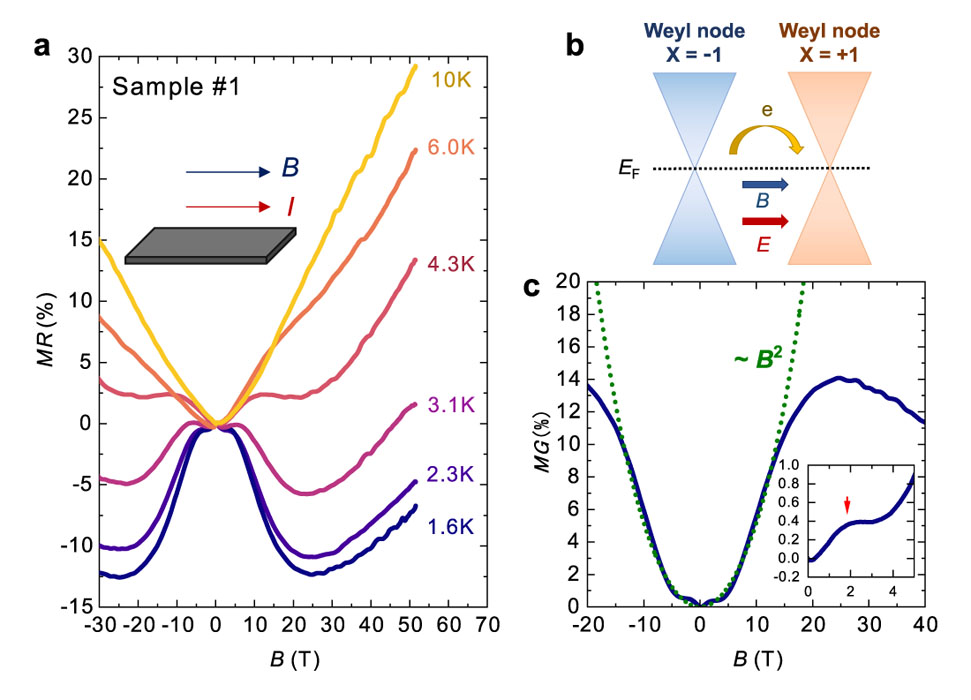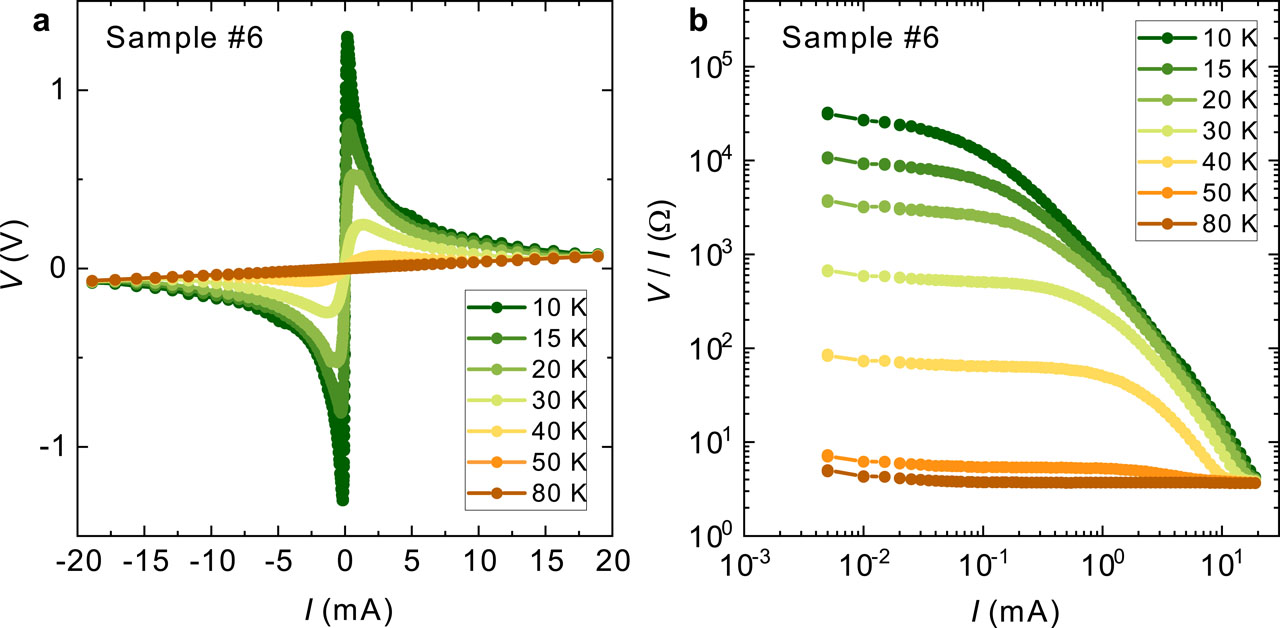Correlation-Driven Organic 3D Topological Insulator with Relativistic Fermions
Kohama and Kindo Group
Topological insulators (TIs) are a new class of materials that possess both bulk insulating and exotic surface/edge states. Conventionally, realizing a TI state usually requires a strong spin–orbit coupling (SOC) of heavy elements, leading to a band inversion and an insulating bulk gap. Consequently, it is challenging to observe a TI state and its unique physical features in light-atom materials, such as carbon-based systems, because of their weaker SOC. Recent theoretical studies propose a new pathway to realize a TI state via strong electron correlation, where the Coulomb interaction induces the bulk gap [1, 2]. Such correlation-driven TIs hold great scientific significance as they expand the scope of materials capable of forming TI states and potentially introduce new functions unique to correlated systems. An organic conductor α-(BETS)2I3 is a theoretical candidate for such correlation-driven TIs [3]. Nonetheless, experimental evidence to determine the accurate electronic state of this compound has been scant.
In our recent work [4], we performed magnetotransport measurement for α-(BETS)2I3 using pulsed high fields up to 60 T to clarify the low-temperature electronic state of this compound. Fig. 1a shows the longitudinal magnetoresistance (MR) measured at several temperatures. As shown in Fig. 1a, a large negative MR is observed below 4 K. This negative longitudinal MR resembles the MR induced by the "chiral anomaly" which is typically observed in three-dimensional (3D) Dirac or Weyl semimetals under parallel electric and magnetic fields (Fig. 1b). This result implies the presence of 3D relativistic particles (Weyl particles) in α-(BETS)2I3. The chiral-anomaly-induced negative MR is expected to be proportional to the square of the magnetic field. As shown in Fig. 1c, the inverse value of MR (written as MG in this report) at low temperatures is well-fitted by a quadratic function across a broad range of magnetic fields. Moreover, unlike the longitudinal MR, the transverse MR of this compound exhibits positive [4], which is also consistent with the characteristics of the 3D-Dirac/Weyl system. Our findings suggest that the band structure of α-(BETS)2I3 has a Dirac-type dispersion with a very small gap, coinciding with the correlation-induced TI state theorized for this compound.

Fig. 1. a Longitudinal MR of α-(BETS)2I3 (I // B). The magnetic-field dependence of MR was measured at several temperatures. The quadratic negative magnetoresistance can be observed below 4 K. b Schematic of the charge flow induced by chiral magnetic effect (CME). In a magnetic field, the positive magnetoconductance (MG) due to the chiral anomaly flows between two Weyl nodes with different chirality x = ±1. c MG at 1.6 K. The green dashed line denotes the fitting curve MG = CaB2 with Ca = 4.92 × 10−4. Below 15 T, MG follows B2 dependence, indicating the CME-induced MR. Inset: Expanded figure of MG at 1.6 K. The hump-like positive MG can be observed below 5 T, implying weak localization.
Next, we measured the current-voltage (I-V) character of this compound to observe a unique functionality of the correlation-driven TI state. As shown in Fig. 2a and 2b, we found that this compound shows a significant negative-differential resistance at low temperatures where a resistance (V/I) reduces by 3~4 orders of magnitude upon current application. This indicates that the low-temperature insulating state of this compound can be switched to a metallic state under external currents. Such metal-insulator switching due to current application is a phenomenon often seen in materials becoming insulating due to electron correlation [5] and is not a characteristic of conventional TIs.

Fig. 2. a Current–voltage (I – V) characteristic measured at several temperatures using the four-terminal dc method with constant currents. A nonlinear conduction effect is observed in the wide current range. b Current dependence of the sample resistance (V/I). In the low current region, V/I is a constant value followed by Ohm’s law. As the applied current increases, the sample resistance decreases by several orders of magnitude.
Our experimental results provide evidence for the theoretical prediction that α-(BETS)2I3 is a TI. This is the first discovery of a TI composed of organic materials. Furthermore, this TI state can be manipulated into other electronic states using external fields, which has a potential for industrial application. We desire to deepen our understanding of the physical properties of organic TIs and advance further material development through research on analog compounds.
References
- [1] S. Raghu, X. L. Qi, C. Honerkamp et al., Phys. Rev. Lett. 100, 156401 (2008).
- [2] D. Ohki, K. Yoshimi, and A. Kobayashi, Phys. Rev. B. 105, 205123 (2022).
- [3] S. Kitou, T. Tsumuraya, H. Sawahata et al., Phys. Rev. B 103, 035135 (2021).
- [4] T. Nomoto, S. Imajo, H. Akutsu et al., Nat. Commun. 14, 2130 (2023).
- [5] F. Sawano, I. Terasaki, H. Mori et al., Nature 437, 522 (2005).
